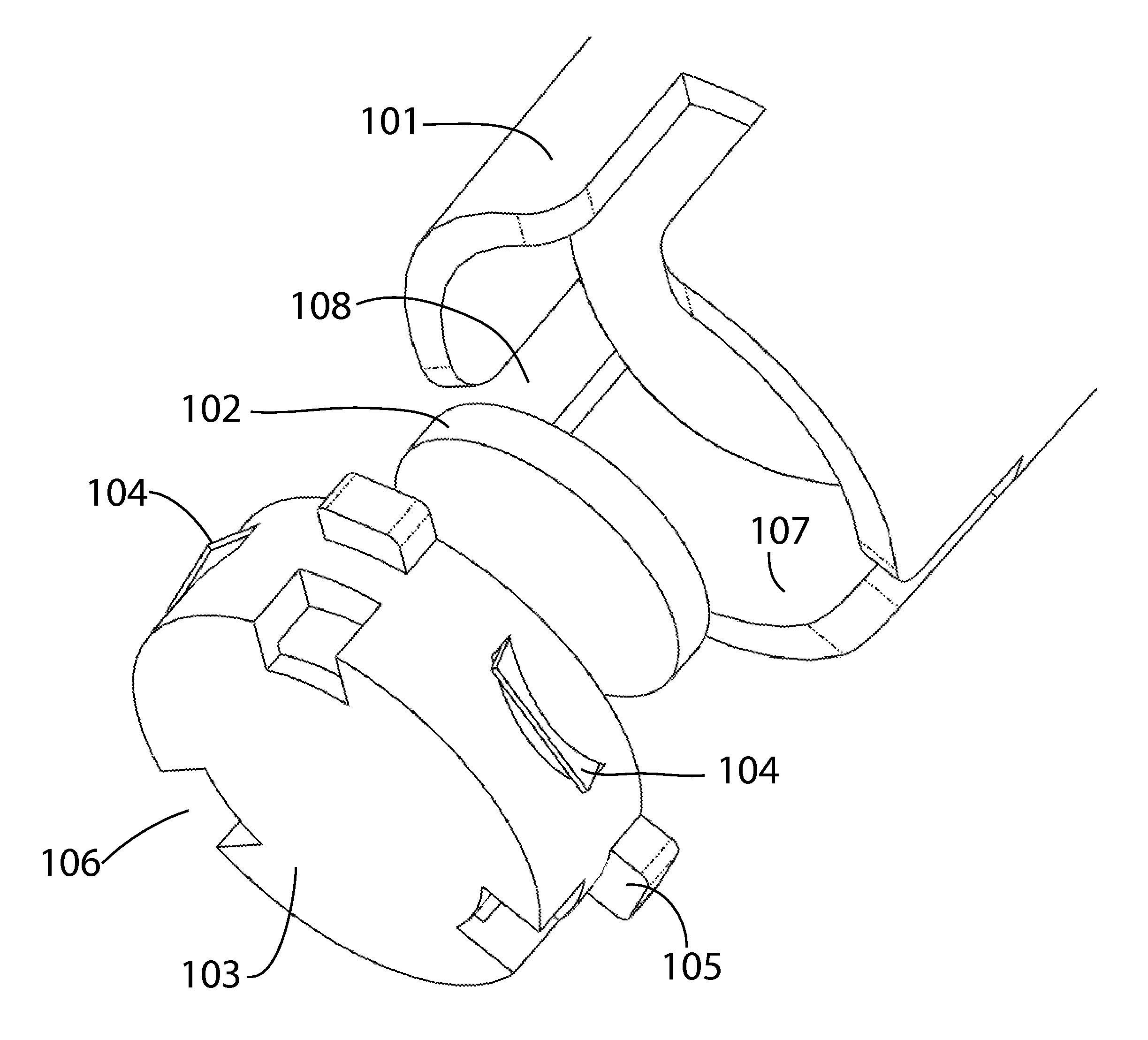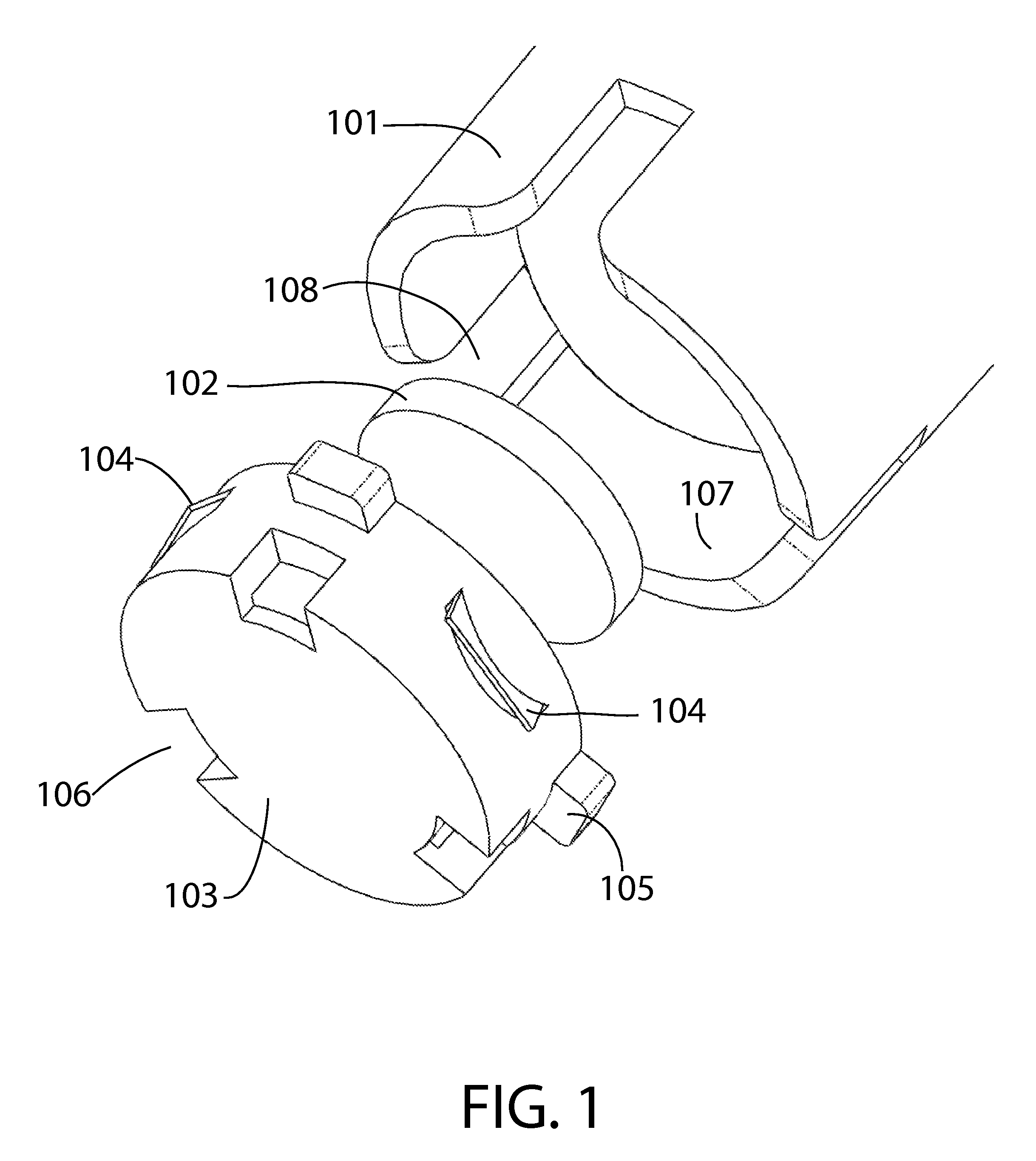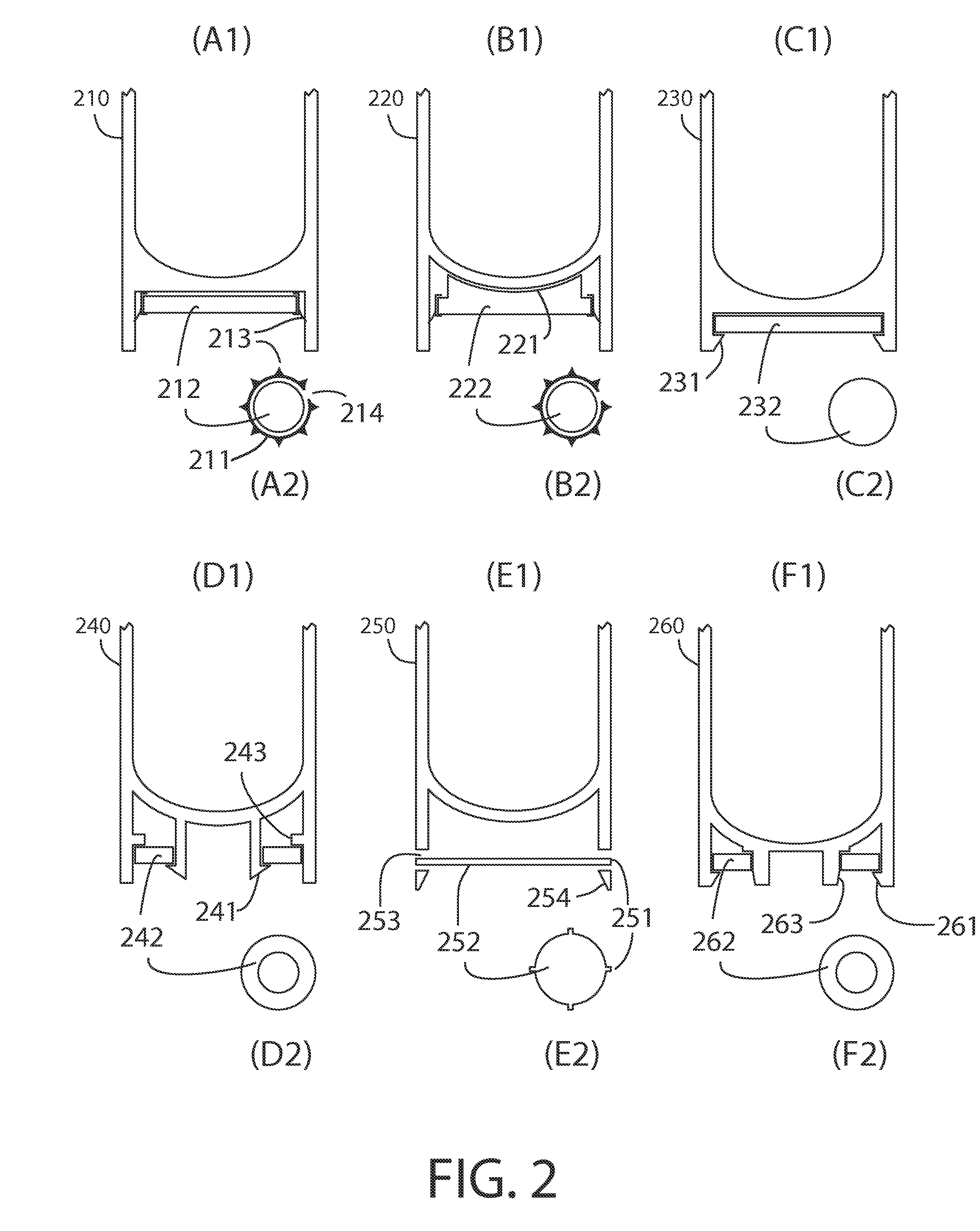Tracking Biological and Other Samples Using RFID Tags
a technology of biological and other samples, applied in the field of rfid tags, can solve the problems of affecting the reading of labels, affecting the identification of stored samples, and fading and peeling,
- Summary
- Abstract
- Description
- Claims
- Application Information
AI Technical Summary
Problems solved by technology
Method used
Image
Examples
Embodiment Construction
Affixing RFID Tags to Vials
[0028]FIGS. 10-13 of the '748 application illustrate different techniques for affixing RFID tags to vials. Each of these techniques involved inserting an existing vial into a tagged tube having an RFID tag hermetically sealed within a bottom compartment of the tagged tube. One problem with these techniques is that the diameter and height of the resulting vial / tube assembly are larger than those of the vial alone. As a result, the vial / tube assembly might not fit within standard storage boxes, centrifuges, and other lab equipment and might force the use of lower-density boxes (i.e., boxes capable of storing fewer vials per unit area).
[0029]Techniques have now been developed for affixing RFID tags to vials without increasing the diameter and / or height of the resulting tagged vials as compared to the original, untagged vials. Some of these techniques can be applied to conventional vials, including conventional vials that already contain biological samples. As...
PUM
 Login to View More
Login to View More Abstract
Description
Claims
Application Information
 Login to View More
Login to View More - R&D
- Intellectual Property
- Life Sciences
- Materials
- Tech Scout
- Unparalleled Data Quality
- Higher Quality Content
- 60% Fewer Hallucinations
Browse by: Latest US Patents, China's latest patents, Technical Efficacy Thesaurus, Application Domain, Technology Topic, Popular Technical Reports.
© 2025 PatSnap. All rights reserved.Legal|Privacy policy|Modern Slavery Act Transparency Statement|Sitemap|About US| Contact US: help@patsnap.com



